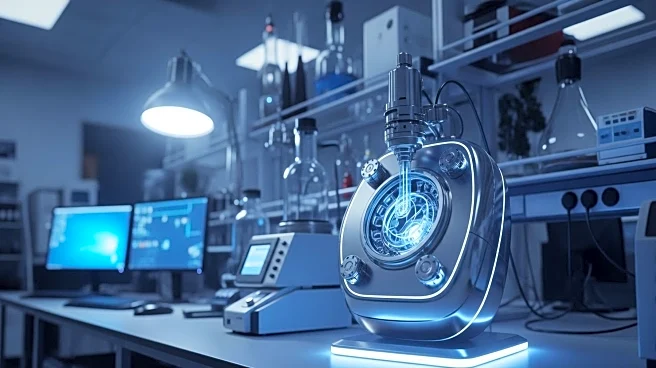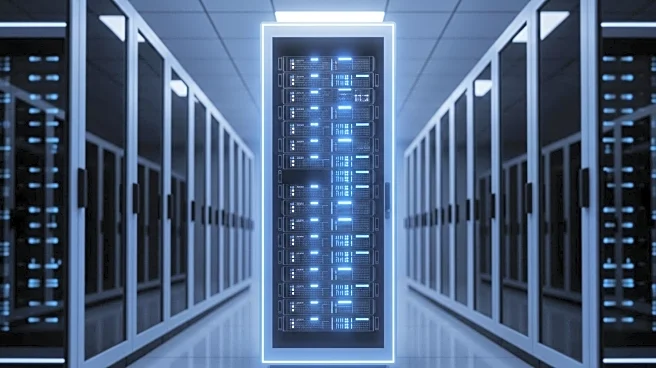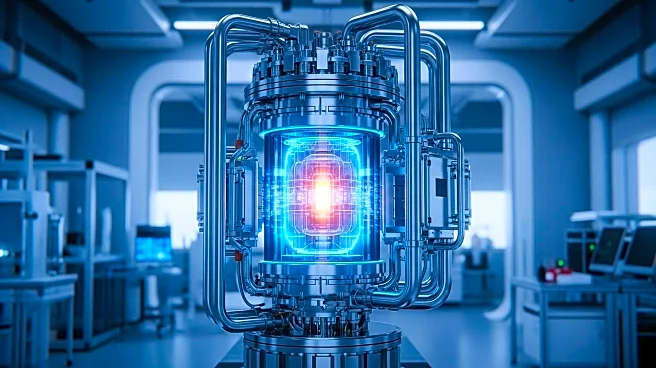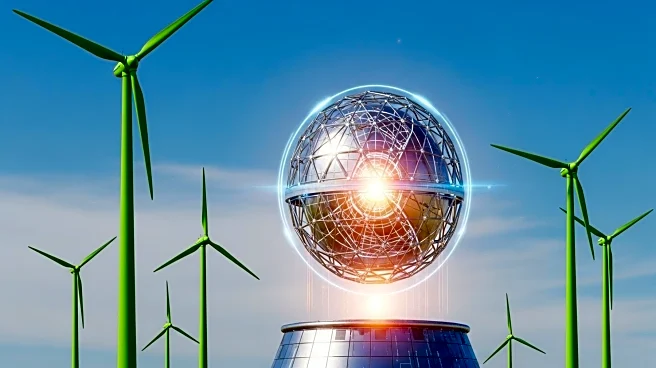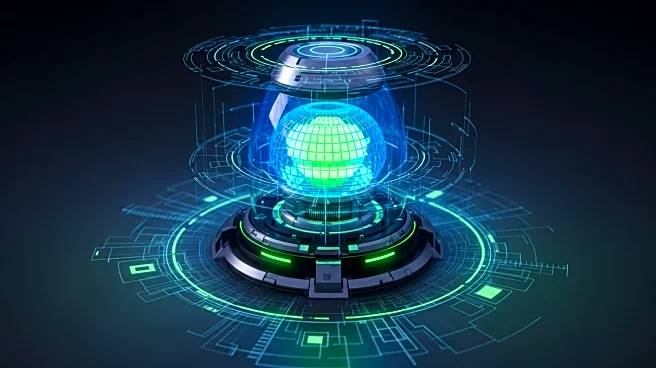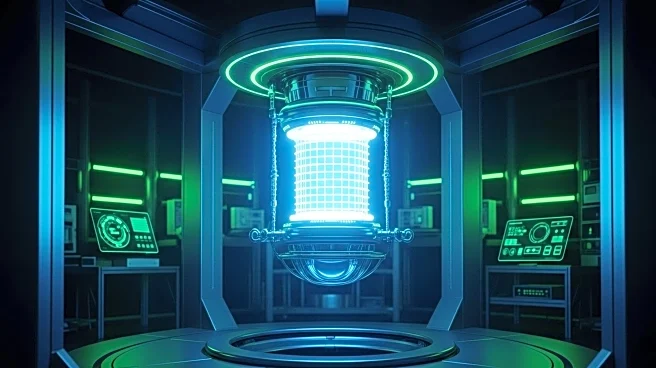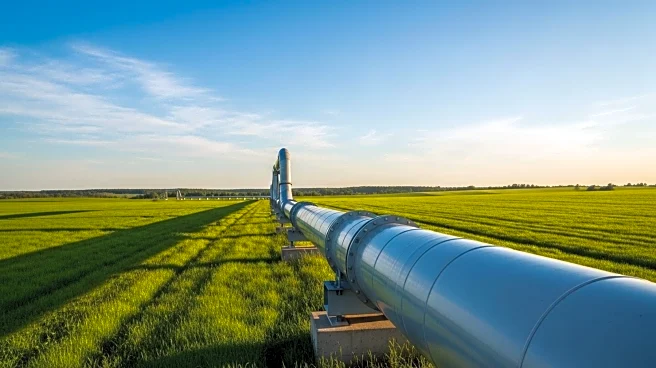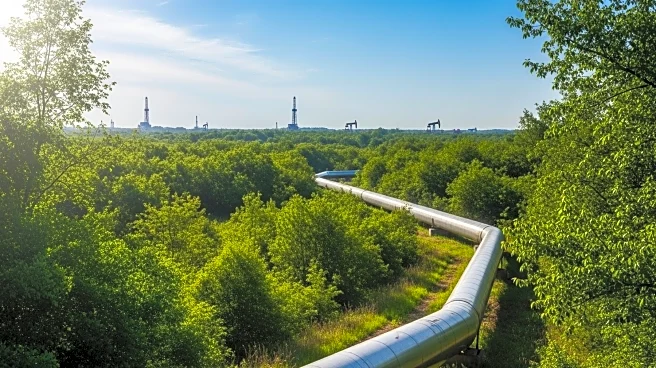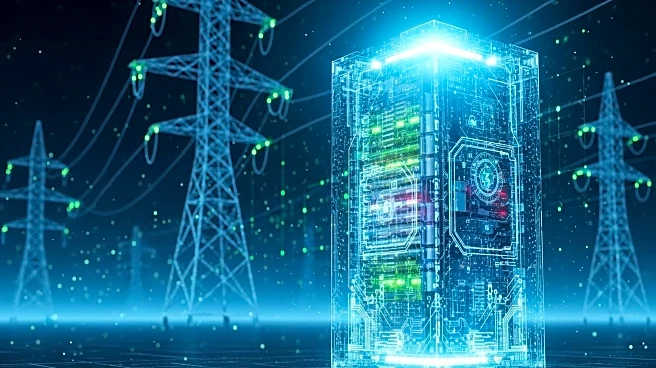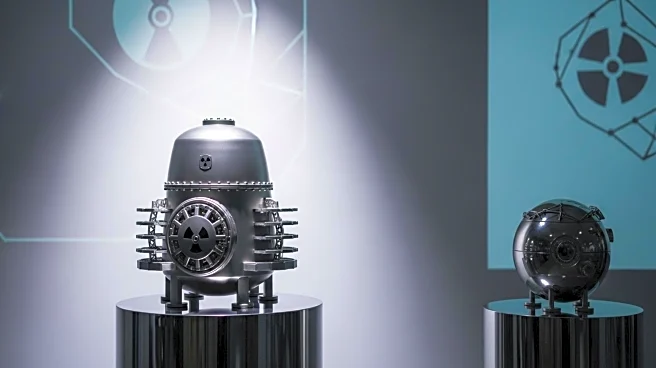What is the story about?
What's Happening?
Researchers at the University of Michigan have developed a physics-based algorithm that enables nuclear microreactors to autonomously adjust their power output. This innovation is significant for microreactors, which are designed to supply energy to remote locations such as rural communities, disaster zones, and cargo ships, where manual oversight may not be feasible. The algorithm allows these reactors to efficiently follow load demands, adjusting power output based on shifting needs without relying on AI or human intervention. The study, published in Progress in Nuclear Energy, involved simulations using High-Temperature Gas-Cooled Reactors, demonstrating the algorithm's ability to maintain precise control over power output adjustments.
Why It's Important?
The development of autonomous microreactors has the potential to revolutionize energy supply in remote areas, offering a reliable and mobile source of electricity. This could significantly benefit communities with limited access to traditional power grids, enhancing energy security and resilience. The algorithm's reliance on physics rather than AI ensures transparency and ease of regulatory approval, addressing safety and security concerns associated with nuclear technology. As the U.S. pushes towards broader deployment of microreactors, this innovation could pave the way for economically viable solutions that meet energy demands while minimizing environmental impact.
What's Next?
The successful implementation of this algorithm could lead to increased interest and investment in microreactor technology, potentially accelerating its deployment across various sectors. Companies involved in nuclear technology may explore partnerships to integrate this algorithm into their systems, enhancing the appeal of microreactors for commercial use. Regulatory bodies will likely assess the algorithm's performance and safety features, which could influence future policy decisions regarding nuclear energy. As communities become more familiar with microreactors, public acceptance may grow, facilitating wider adoption and integration into energy infrastructure.
Beyond the Headlines
The shift towards physics-based solutions in nuclear technology highlights a broader trend of prioritizing transparency and safety in energy innovations. This development may inspire further research into non-AI-based control systems across other industries, promoting ethical and secure technological advancements. Additionally, the successful deployment of microreactors could contribute to reducing carbon emissions, aligning with global efforts to combat climate change and transition to sustainable energy sources.
AI Generated Content
Do you find this article useful?
